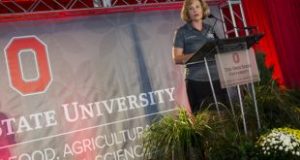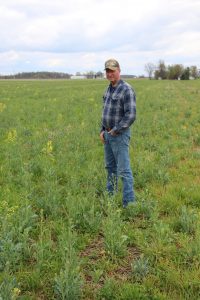Agronomy, Conservation, Homepage Slider, Water Quality
Ohio Agriculture Conservation Initiative presents priorities and progress to Ohio Senate
The Ohio Agriculture Conservation Initiative (OACI) recently presented their priorities for water quality improvement and progress to the Ohio Senate Agriculture and Natural Resources Committee.  OACI, created to improve water quality in Ohio’s lakes, streams and rivers, is partnering with Governor DeWine’s H2Ohio initiative to address Ohio’s water quality challenges. Statements were heard from several Ohio agricultural and environmental leaders, academia, and farmers enrolled in the H2Ohio program and OACI Farmer Certification Program.
OACI, created to improve water quality in Ohio’s lakes, streams and rivers, is partnering with Governor DeWine’s H2Ohio initiative to address Ohio’s water quality challenges. Statements were heard from several Ohio agricultural and environmental leaders, academia, and farmers enrolled in the H2Ohio program and OACI Farmer Certification Program.

“OACI brings an unprecedented group of collaborators together to examine the relationship between water quality and agriculture, which furthers H2Ohio’s broader ambitions to address water quality issues across the state,” said Cathann A. Kress, Vice President for Agricultural Administration and Dean of the Ohio State University’s College of Food, Agricultural and Environmental Sciences (CFAES). “OSU supports OACI by conducting research and providing Extension education to improve water quality and increase sustainability. This interdisciplinary research links field studies, watershed models, and socio-economic analyses with stakeholder groups to investigate connections between downstream water quality and management practices in upstream watersheds.”
OACI is an innovative partnership between agriculture, conservation, environmental and research communities to recognize farmers for their dedication to advancing methods that improve water quality in Ohio and increasing the number of best management practices being implemented on farms.
“We must continue to work collaboratively and with urgency to eliminate perennial harmful algal blooms in Ohio waterways,” said Heather Taylor-Meisle, Executive Director of the Ohio Environmental Council. “Synchronizing the important, science-based conservation work on farm fields across the state with funding will be critical to solving this longstanding problem.”
OACI was formed to accomplish two key goals: create a universally recognized farmer certification program that will help increase adoption of best management practices and create a confidential farm practices assessment that will benchmark best management practices adoption and track progress toward our goals.
The OACI Farmer Certification Program launched in fall 2020. Through the program, farmers self-report acreage information about their farm’s soil testing, nutrient application, nutrient placement, on-field management and structural practices. The certification program will recognize those farmers that demonstrate a commitment to continuous improvement in the implementation of conservation and nutrient management practices.
“Farmers are dedicated to conservation and doing the best they can to improve and ensure their land and resources are managed in such a way that it can be passed on to future generations, and that means working with all our partners in this effort,” said Jeff Duling, Putnam County row crop and hog farmer.

“Conservation coupled with continuous improvement isn’t just a goal, it’s something we actively pursue and demonstrate in our practices. OACI’s farmer certification program reinforces farmers’ commitment to always striving for better.”
OACI’s assessment program will gain a baseline understanding of current conservation and nutrient management efforts. The program will assess and confidentially take inventory of farm practices to identify and provide resources that encourage increased adoption of science-based practices that contribute towards healthier waterways.
A pilot survey has been conducted in the Lower Maumee Watershed that included more than 450 farm fields. The survey was conducted by staff of the county’s Soil and Water Conservation Districts and will be analyzed by OSU-CFAES.
“One of the overarching purposes of H2Ohio is to find ways to reduce agricultural phosphorus runoff,” Kress said. “The research conducted by OSU-CFAES, as well as the efforts by OACI to increase voluntary adoption of best management practices, perfectly complement H2Ohio, and will help the program succeed. At OSU, we remain committed to our land grant mission to serve our state through research, education, and extension, while addressing the complex problems and opportunities before us.”
The information collected will create a roadmap for adoption of best practices by increasing awareness, education, and funding for farmers to strive for higher levels of conservation.
OACI offers resources and education that farmers need to proactively employ modern, science-based practices on their farms and better demonstrate how those efforts are improving water quality over time. By collaboratively learning and sharing information across environmental and agricultural communities, OACI is committed to identifying nutrient management and water quality solutions and helping farmers execute them.
For more information about OACI, visit www.OhioACI.org.